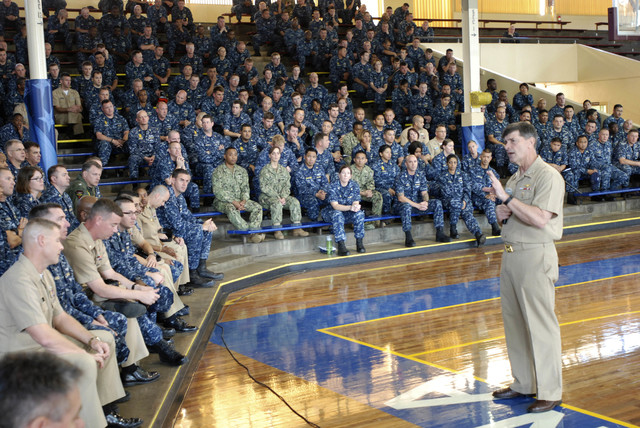PEARL HARBOR, Oahu (AP) — The U.S. Navy’s top human resources officer said Thursday he’s confident the service will overcome any cultural barriers to fully integrating women into the submarine force. ADVERTISING PEARL HARBOR, Oahu (AP) — The U.S. Navy’s
PEARL HARBOR, Oahu (AP) — The U.S. Navy’s top human resources officer said Thursday he’s confident the service will overcome any cultural barriers to fully integrating women into the submarine force.
Vice Adm. Bill Moran, chief of naval personnel, told reporters he plans to get a firsthand look of how well the process is going when he boards the USS Mississippi at Pearl Harbor later this week.
The first two women to serve on the Virginia-class submarine arrived last month. The supply officer and submariner are the first women in the Pacific Fleet and among the first in the Navy to serve on attack submarines.
Asked about traditions in the underwater fleet that may be crude, Moran said he wasn’t a submariner himself but he said they were a highly professional force.
“Part of being a professional is treating people with dignity and respect,” Moran said. “If there are cultural aspects of being a submariner that don’t comport with professionalism, male and female, then I’m sure they’re going to figure out a way to get rid of those cultural barriers.”
Women have been serving on ballistic missile submarines for several years, after the Navy ended a ban on women serving on board submarines in 2010.
But attack submarines are smaller and present different challenges.
The Navy and its contractors have been working on design changes to accommodate mixed-gender crews on submarines, where privacy is scarce for all, but especially the enlisted sailors. Sailors on the roomiest subs sleep nine to a bunk room, with four showers and seven toilets for the roughly 140 enlisted men. And passageways are so narrow that crew members can barely pass one another without touching.
The Navy is first bringing female officers, then senior enlisted women on board the submarines to be followed by junior enlisted women.
The first female enlisted sailors selected for the “silent service” began training at submarine school in Connecticut in August.
Moran said his challenge was to ensure enough women are on board the submarines to have them well-represented throughout the ranks from officer to chief and junior enlisted. Moran has said previously that problems develop if a ship has many junior enlisted females but no senior enlisted women on board to mentor them.
But he said he expects the ranks of female submariners to swell as time passes.
“Once enlisted women get on board submarines and their experiences are positive, that word spreads by social media and other ways and hopefully that helps inspire other women to want to continue,” he said.



